
https://ebookmass.com/product/technologies-for-integrated-
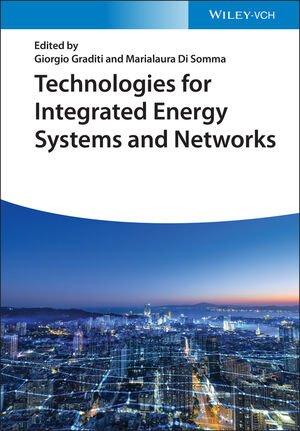
Instant digital products (PDF, ePub, MOBI) ready for you
Download now and discover formats that fit your needs...
Distributed Energy Resources in Local Integrated Energy Systems: Optimal Operation and Planning Giorgio Graditi
https://ebookmass.com/product/distributed-energy-resources-in-localintegrated-energy-systems-optimal-operation-and-planning-giorgiograditi/ ebookmass.com
Energy Storage Systems: System Design and Storage Technologies Armin U. Schmiegel
https://ebookmass.com/product/energy-storage-systems-system-designand-storage-technologies-armin-u-schmiegel/
ebookmass.com
Optimal Operation of Integrated Multi-Energy Systems Under Uncertainty 1st Edition Wu
https://ebookmass.com/product/optimal-operation-of-integrated-multienergy-systems-under-uncertainty-1st-edition-wu/
ebookmass.com
Social Work and the Grand Challenge to
Eliminate
Racism: Concepts, Theory, and Evidence Based Approaches Martell L. Teasley
https://ebookmass.com/product/social-work-and-the-grand-challenge-toeliminate-racism-concepts-theory-and-evidence-based-approachesmartell-l-teasley/ ebookmass.com
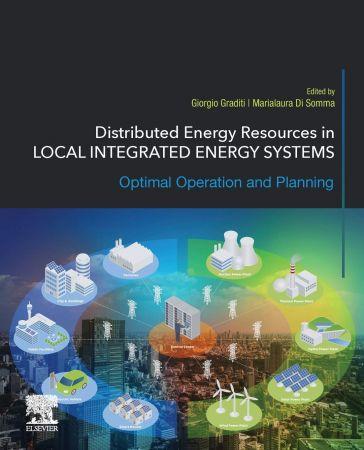
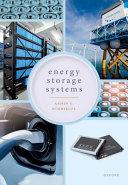
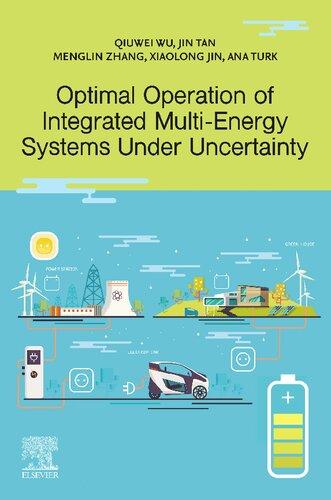
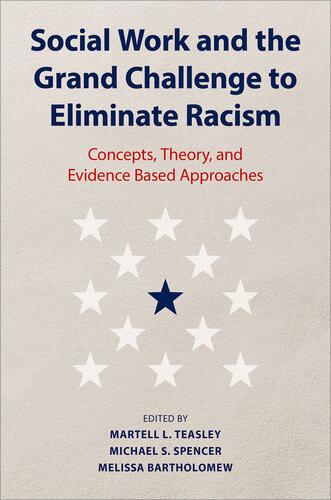
Managing Human Behavior in Public and Nonprofit Organizations 5th Edition, (Ebook PDF)
https://ebookmass.com/product/managing-human-behavior-in-public-andnonprofit-organizations-5th-edition-ebook-pdf/
ebookmass.com
gestión de recursos humanos Mc Graw Hill
https://ebookmass.com/product/gestion-de-recursos-humanos-mc-grawhill/
ebookmass.com
The Earth and Its Peoples: A Global History (7th Ed.) 7th Edition Richard Bulliet
https://ebookmass.com/product/the-earth-and-its-peoples-a-globalhistory-7th-ed-7th-edition-richard-bulliet-2/
ebookmass.com
Introduction to the Theory of Complex Systems Stefan Thurner
https://ebookmass.com/product/introduction-to-the-theory-of-complexsystems-stefan-thurner-2/
ebookmass.com
Who Are We Now? Jason Cowley
https://ebookmass.com/product/who-are-we-now-jason-cowley/
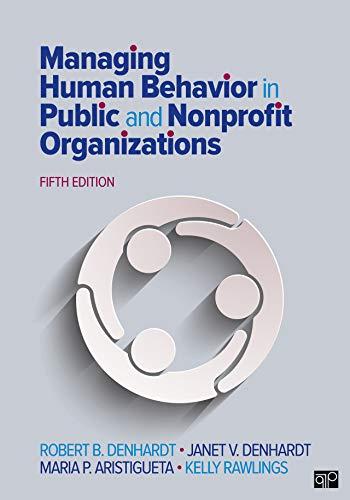




ebookmass.com
Essentials of Life-Span Development with Connect Access
Card 5th Edition John W Santrock
https://ebookmass.com/product/essentials-of-life-span-developmentwith-connect-access-card-5th-edition-john-w-santrock/
ebookmass.com

Editedby GiorgioGraditiandMarialauraDiSomma
TheEditors
Dr.GiorgioGraditi
ItalianNationalAgencyforNew Technologies
EnergyandSustainableEconomic Development
ENEA,DepartmentofEnergy TechnologiesandRenewableSources
Rome,Italy
Dr.MarialauraDiSomma
ItalianNationalAgencyforNew Technologies EnergyandSustainableEconomic Development
ENEA,DepartmentofEnergy TechnologiesandRenewableSources Rome,Italy
CoverImage: ©zfL/GettyImages
Allbookspublishedby WILEY-VCH arecarefully produced.Nevertheless,authors,editors,and publisherdonotwarranttheinformation containedinthesebooks,includingthisbook, tobefreeoferrors.Readersareadvisedtokeep inmindthatstatements,data,illustrations, proceduraldetailsorotheritemsmay inadvertentlybeinaccurate.
LibraryofCongressCardNo.: appliedfor
BritishLibraryCataloguing-in-PublicationData Acataloguerecordforthisbookisavailable fromtheBritishLibrary.
Bibliographicinformationpublishedby theDeutscheNationalbibliothek TheDeutscheNationalbibliothekliststhis publicationintheDeutscheNationalbibliografie;detailedbibliographicdataareavailable ontheInternetat <http://dnb.d-nb.de>.
©2022WILEY-VCHGmbH,Boschstr.12, 69469Weinheim,Germany
Allrightsreserved(includingthoseof translationintootherlanguages).Nopartof thisbookmaybereproducedinanyform–by photoprinting,microfilm,oranyothermeans–nortransmittedortranslatedintoamachine languagewithoutwrittenpermissionfromthe publishers.Registerednames,trademarks,etc. usedinthisbook,evenwhennotspecifically markedassuch,arenottobeconsidered unprotectedbylaw.
PrintISBN: 978-3-527-34899-2
ePDFISBN: 978-3-527-83361-0
ePubISBN: 978-3-527-83362-7
oBookISBN: 978-3-527-83363-4
Typesetting Straive,Chennai,India
Printedonacid-freepaper 10987654321
Contents
1ChallengesandOpportunitiesoftheEnergyTransitionand theAddedValueofEnergySystemsIntegration 1
MarialauraDiSommaandGiorgioGraditi
1.1EnergyTransformationTowardDecarbonizationandtheAddedValueof EnergySystemsIntegration 1
1.2EuropeanUnionastheGlobalLeaderinEnergyTransition 6
1.3PillarsfortheTransitionTowardIntegratedDecentralizedEnergy Systems 11
ListofAbbreviations 13 References 13
2IntegratedEnergySystems:TheEngineforEnergy Transition 15
MarialauraDiSommaandGiorgioGraditi
2.1Introduction:theConceptofIntegratedEnergySystem 15
2.2KeyEnablersforIntegratedEnergySystems 18
2.2.1StorageandConversionTechnologies 18
2.2.2EndUserEngagementandEmpowerment 22
2.2.3DigitalizationEnabler 24
2.2.4EmergenceofanIntegratedEnergyMarket 27
2.3IntegratedEnergySystemsattheLocalLevel 28
2.3.1ConceptualizingLocalIntegratedEnergySystems 28
2.3.2MapofEnablingTechnologies 29
2.3.3KeyStakeholdersandRelatedBenefitsfromLocalIntegratedEnergy SystemsDeployment 31
2.4MainBarriersforImplementation 33
2.4.1Techno-economicBarriers 34
2.4.2SocioeconomicBarriers 35
2.4.3PolicyandRegulatoryBarriers 35
2.5Conclusions 36
ListofAbbreviations 38 References 38
3PowerConversionTechnologies:TheAdventofPower-to-Gas, Power-to-Liquid,andPower-to-Heat 41
JoshuaA.Schaidle,R.GaryGrim,LingTao,MarkRuth,KevinHarrison, NancyDowe,ColinMcMillan,ShantiPless,andDouglasJ.Arent
3.1Introduction 41
3.1.1MotivationforPower-to-X 41
3.1.2DefiningPower-to-XCategories 43
3.1.3GoalofthisChapter 44
3.2Power-to-XTechnologies 44
3.2.1Power-to-Gas 44
3.2.1.1NaturalGasMarketDemand 45
3.2.1.2TechnologyIdentificationandOverview 46
3.2.1.3UniqueIntegrationChallengesandOpportunities 47
3.2.2Power-to-Chemicals-and-Fuels 48
3.2.2.1MarketandDemand 48
3.2.2.2TechnologyIdentificationandOverview 49
3.2.2.3UniqueIntegrationChallengesandOpportunities 54
3.2.2.4ImplicationsonPowerGeneration 54
3.2.3Power-to-Heat 57
3.2.3.1MarketandDemand 57
3.2.3.2TechnologyIdentificationandOverview 60
3.2.3.3UniqueIntegrationChallengesandOpportunities 60
3.2.3.4ImplicationsonPowerGeneration 62
3.3OverarchingChallenges,Opportunities,andConsiderations 62
3.3.1FeedstockandEnergySourcing 62
3.3.1.1Feedstocks(CO2 ,N2 ,H2 O,andBiomass) 62
3.3.1.2OperationalFlexibilityforGridIntegrationandRevenue 63
3.3.2KeyConsiderationsfromLifeCycleAnalysisandTechno-economic Analysis 64
3.3.2.1LifeCycleAnalysis 64
3.3.2.2Techno-EconomicAnalysis 64
3.3.3BusinessModelandBusinessInnovation 65
3.4ConcludingRemarks 66 Disclaimer 66
ListofAbbreviations 66 References 67
4RoleofHydrogeninLow-CarbonEnergyFuture 71
AndreaMonfortiFerrario,VivianaCigolotti,AnaMarìaRuz,FelipeGallardo, JoseGarcía,andGiuliaMonteleone
4.1Introduction 71
4.2MainDriversforHydrogenImplementation 72
4.2.1IncreasingPenetrationofStochasticRenewableEnergy 73
4.2.2OpportunityofHydrogenasaSectorCouplingEnabler 74
4.3HydrogenEconomyandPolicyinEuropeandWorldwide 74
4.4MainRenewableHydrogenProduction,Storage,and Transmission/DistributionSchemes 77
4.4.1HydrogenProductionPathways 77
4.4.2HydrogenTransmissionandDistribution 79
4.4.2.1MainHydrogenStorageTechnologies 79
4.4.2.2MethodsforHydrogenTransmissionandDistribution 81
4.5TechnologicalApplicationsinIntegratedEnergySystemsand Networks 83
4.5.1HydrogenasanEnergyStorageSystemforFlexibilityatDifferent Scales 83
4.5.2IndustrialUseasaRenewableFeedstockinHard-to-AbateSectorsand fortheProductionofDerivates 84
4.5.3HydrogenMobility:AComplementarySolutiontoBatteryElectric Vehicles 85
4.5.4FuelCells,FlexibleElectrochemicalConversionSystemsfor High-EfficiencyPower,and/orCHPApplications 86
4.6Conclusions 89
ListofAbbreviations 90 References 91
5ReviewontheEnergyStorageTechnologieswiththeFocuson Multi-EnergySystems 105 MortezaVahid-Ghavidel,SaraJavadi,MatthewGough,MohammadS.Javadi, SérgioF.Santos,MiadrezaShafie-khah,andJoãoP.S.Catalão
5.1Introduction 105
5.2EnergyStorage 106
5.2.1MainConceptofEnergyStorageinthePowerSystem 106
5.2.2DifferentTypesofEnergyStorageSystems 108
5.2.2.1ElectromechanicalEnergyStorageSystems 110
5.2.2.2ElectromagneticEnergyStorageSystems 111
5.2.2.3ElectrochemicalEnergyStorageSystems 112
5.2.2.4ThermalEnergyStorageSystems 113
5.2.3AdvantagesofStorageintheEnergySystem 113
5.3EnergyStorageTechnologyApplicationintheMulti-Energy Systems 116
5.4Conclusion 118
ListofAbbreviations 119 References 119
6DigitalizationandSmartEnergyDevices 123 MaherChebbo
6.1Introduction 123
6.2OurVisionoftheDigitalNetworks 130
6.3EnablingState-of-the-ArtDigitalTechnologies 138
6.4KeyDigitalUseCasesandAssociatedBenefits 144
6.5IntegratedDigitalPlatformAcrossStakeholders 149
6.6KeyDigitalRecommendations 150
6.7Conclusion 156
ListofAbbreviations 159 References 160 FurtherReading 162
7SmartandSustainableMobilityAdaptationTowardtheEnergy Transition 165
CarlaSilva,CatarinaMarques,MarianaRaposo,andAngeloSoares
7.1SmartandSustainableMobilityDefinitionsandMetrics 165
7.1.1SustainableMobilityKPI(KeyPerformanceIndicators) 167
7.1.2KPIofUrbanMobilityinTwoEuropeanCities 169
7.2SmartMobilityAppliedtoBicycleSharinginUrbanContextandImpacts onSustainability 175
7.3Ground-LevelOzoneIndicator 178
7.4EnergyTransition 179
7.5ResilienceoftheMobilitySystem 180
7.6Conclusions 182 Acknowledgments 182
ListofAbbreviations 183 References 184
8EvolutionofElectricalDistributionGridsTowardtheSmart GridConcept 187
LucíaSuárez-Ramón,PabloArboleya,JoséLorenzo-Álvarez,and JoséM.Carou-Álvarez
8.1SmartGridConcept 187
8.2AdvancedMeteringInfrastructure(AMI)GeneralDescription 188
8.3CommunicationsandImpactonRemoteManagement 199
8.3.1PLCPRIMECommunication 200
8.3.2DataConcentratorUnit(DCU)Description 204
8.3.3SmartMeterDescription 205
8.3.4FutureScenario:EvolutionofCommunicationsTowardHybrid Systems 206
8.4CentralSystemforDataReceptionandAnalysis 206
8.4.1Real-TimeEventManagement 207
8.4.2LVNetworkMonitoring 208
8.4.3AutomaticDiagnostic 208
8.5DSOChallenge:AMIforLVNetworkManagement 209
8.6DigitalTwinoftheLVNetwork 210
8.7EvolutionoftheFunctionalitiesforLVNetworkManagement 212
8.8Conclusions 213
ListofAbbreviations 213 References 214
9SmartGridsfortheEfficientManagementofDistributed EnergyResources 215
RobertoCiavarella,MarialauraDiSomma,GiorgioGraditi,andMariaValenti
9.1ElectricalSystemTowardtheSmartGridConcept 215
9.1.1TechnologyAreasofSmartGrids 218
9.1.2ServicesandFunctionalitiesoftheSmartGrids 219
9.1.2.1NeedstoIntegrateNewEmergingTechnologies 220
9.1.2.2ImprovetheOperationoftheNetwork 220
9.1.2.3NewInvestmentPlanningCriteria 220
9.1.2.4ImprovetheFunctionalityoftheMarketandServicestoEndUsers 220
9.1.2.5ActiveInvolvementoftheEndUser 221
9.1.2.6IncreasedEnergyEfficiencyandReducedEnvironmentalImpact 221
9.2NeedofaMulti-DomainOptimizationinSmartGrids 221
9.3AdvancedControlMechanismsforSmartGrid 225
9.3.1ArchitectureandGridModel 225
9.3.2CongestionIssuesintheTSODomain 226
9.3.3CongestionIssuesintheDSODomain 228
9.3.4FrequencyInstabilityintheTSODomain 230
9.4CaseStudies 231
9.4.1CaseStudy1:CongestionEventsattheTransmissionLevel 231
9.4.2CaseStudy2:CongestionEventsattheDistributionLevel 232
9.4.3CaseStudy3:FrequencyInstabilityIssues 233
9.5Conclusions 234
ListofAbbreviations 235 References 235
10NearlyZero-EnergyandPositive-EnergyBuildings:Statusand Trends 239
DeniaKolokotsa,GloriaPignatta,andGiuliaUlpiani
10.1Introduction 239
10.1.1ConceptofNearlyZero-andPositive-EnergyBuildings 240
10.1.1.1Definitions,Regulations,andStandards 240
10.1.2OverviewofDesignStrategies 242
10.1.2.1EnergyConservationStrategies 243
10.1.2.2EnergyGenerationStrategies 246
10.1.2.3SmartReadiness 248
10.2StatusandResearchDirectionsonHigh-PerformanceBuildingsfor theComingDecade 253
10.2.1OverviewofCaseStudiesandResearchProjects 253
10.2.1.1Challenges,Drivers,andBestPractices 256
x Contents
10.2.2TransitionfromIndividualNearlyZero-EnergyBuildingsto Positive-EnergyDistricts(PEDs) 258
10.3Conclusions 259
ListofAbbreviations 260 References 261
11TransitionPotentialofLocalEnergyCommunities 275 GabrieleComodi,GianlucaSpinaci,MarialauraDiSomma,and GiorgioGraditi
11.1Introduction 275
11.1.1“2030AgendaforSustainableDevelopment”ofUnitedNations 276
11.1.2CleanEnergyforAllEuropeanPackage:RenewableandCitizen“Energy Communities” 277
11.1.3HumanCapitalforLocalEnergyCommunities 278
11.1.4LocalEnergyCommunities:AnOrganizationalBottom-UpModelto EmpowerFinalUsers 279
11.2LocalEnergyCommunitiesMakingtheGreenDealGoingLocal 280
11.2.1GameChangeroftheGreenDeal 280
11.2.2GreenDealGoingLocal 283
11.2.3NeighborhoodApproachandLocalEnergyCommunitiesintheGreen Deal 284
11.3LocalEnergyCommunitiesasIntegratedEnergySystemsatLocal Level 285
11.3.1LocalEnergyCommunitiesasPromotersforSectorCoupling 285
11.3.2OptimalMedium–Long-TermPlanningforLocalEnergy Communities 287
11.3.3KeyTechnologiesintheContextofLocalEnergyCommunities 288
11.3.4DigitalizationtoEnableFlexibilityandEmpowerFinalUsers 296
11.4LocalEnergyCommunitiesandEnergyTransition:AVisionfortheNext Future 298
11.4.1SomeReflections 299
11.5Conclusions 300
ListofAbbreviations 301 References 302
Index 305
ChallengesandOpportunitiesoftheEnergyTransitionand theAddedValueofEnergySystemsIntegration
MarialauraDiSommaandGiorgioGraditi
ItalianNationalAgencyforNewTechnologies,EnergyandSustainableEconomicDevelopment,ENEA, DepartmentofEnergyTechnologiesandRenewableSources,Rome,Italy
1.1EnergyTransformationTowardDecarbonizationand theAddedValueofEnergySystemsIntegration
Theglobalenergytransformationisalreadyinplace,andthisrepresentsthemain replyofhumanitytosafeguardglobalclimateandmaintainsustainableexistenceon Earth.Thefirststeptowardthisenergytransformationandtheinternationalcommitmenttocombatingclimatechange,increasingenergyaccess,andmaintaining biodiversityisrepresentedbytheParisAgreementsigningatCOP21withthegoal tomaintainglobalwarminglowerthan2 ∘ Cabovethepre-industriallevels.ConcurrenttotheParisAgreement,countriescommittedtotheUnitedNations(UN) 17SustainableDevelopmentGoals(SDGs),representingtheplantowardabetter worldforpeopleandourplanettobeachievedby2030[1].Tacklingclimatechange isatransversalgoalforalmostallSDGs.Althoughtheinternationalcommitmentis evident,challengesstillremainforthesuccessfulimplementationoftheParisAgreementandclimate-andenergy-relatedSDGs,andthegapbetweenaspirationand realityincombatingclimatechangeremainssignificant.
Meetingtheseambitiousgoalsrequiresthecommitmentbeyondtheelectricity sector,whereasprovidingdecarbonizationacrossdifferentsectorsthroughanintegratedapproachcanrepresentavalidsolution.ThisisthemainideabehindtheconceptofIntegratedEnergySystemsthat,accordingtotheETIPSNETVision2050[2], aredefinedasanintegratedinfrastructureforallenergycarriers,withtheelectrical systemasthebackbone.Thesesystemsarecharacterizedbyahighlevelofintegrationamongallnetworksofenergycarriersobtainedthroughcouplingelectrical andgasnetworks,heating,andcooling,supportedbyenergystorageandconversion processes.Couplingdifferentsectorsindicatesincreasingeffortsinasynergicway bycoordinatingtheplanningandtheoperationofenergysystemsacrossmultiple energycarrierswhilealsoachievingamoreflexible,reliable,andefficientenergy systemasawhole.
Themainenergytrendstowarddecarbonizationarediscussedbelowalongwith theaddedvalueofferedbyenergysystemsintegration.
TechnologiesforIntegratedEnergySystemsandNetworks,FirstEdition. EditedbyGiorgioGraditiandMarialauraDiSomma. ©2022WILEY-VCHGmbH.Published2022byWILEY-VCHGmbH.

Evolutionofthecurrentenergysystemtoanelectrifiedenergysystem.
Electrification isconsideredavalidcost-effectivepathwayfordecarbonization offinalenergyconsumption.Thisismainlyduetothefactthatseveraltechnologies forconvertingrenewableenergyintoelectricityhaverecentlybecomeavailableat competitivepricessuchasPVandwindturbines.Ontheotherhand,alargepartof CO2 emissionsinindustries,transport,andbuildingsisnotrelatedtopowersector buttoenduseoffossilfuels.Thatiswhy,alarge-scaleelectrification,characterized bythepenetrationofanelectricitycarrierproducedbyrenewabletechnologiesin building,transport,andindustrysectors,representsagoodpathwayfordecarbonization.AccordingtotheInternationalRenewableEnergyAgency(IRENA)Renewable EnergyRoadmap(REmap)[3],theshareofelectricityinfinalenergyconsumption amountsto20%todayandwillreachthepercentagesof29%,38%,and49%in2030, 2040,and2050,respectively.
Figure1.1showsthechangefromthecurrentenergysupplysystemwherethe electricitydemandistypicallysatisfiedbyanelectricitynetworkandheatdemand bygas-firedboilerssuppliedbyagasnetworktoanelectrifiedenergysystem,where theelectricitynetworkisusedtosatisfyallenergydemands,includingheatdemand throughPower-to-Heat(PtH)technologies.Anelectrifiedfutureposesimportant questionssuchashowmuchadditionalpowernetworkcapacitydoweneedtosatisfyalltypesofenergydemands?Or,whathappensifthereisacontingencyinthe powersystem?
Astrongelectrificationscenariocreatesanumberofchallengesfortheoperation ofapowersystem,whichinprinciplewouldneedadditionalflexibility,reinforcement,andnewinvestmentsforthetransmissionanddistributionnetworks.
InFigure1.2,thecurrentenergysystemiscomparedtoanintegratedenergysystem,whichissomethingmorethananelectrifiedenergysystem.Infact,insuch system,multiplehybridenergytechnologiesaremanagedwithhighsynergytosatisfythemulti-energydemandandservicescanbeprovidedwiththemostconvenient energycarrierandsector.
Ifelectrificationoffinalconsumptioniscombinedwiththeintegrationofenergy sectors,decarbonizationofenergydemandwouldbereachedthroughpenetration ofrenewablesinallenergyendusesectorswhilealsogettinghigherflexibility forthewholesystembyreducingtheneedsforreinforcingtheexistingnetwork infrastructures.Moreover,energysystemsintegrationallowsincreasingefficiency intheenergyresourcesusethroughexploitingsynergiescomingfromtheinterplay
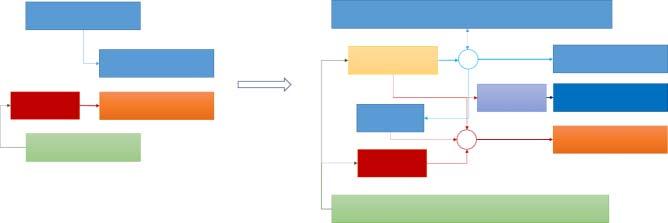
Figure1.2 Comparisonbetweenthecurrentenergysystemandanintegratedenergy system.
ofdifferentenergycarriersandreductionofrenewableenergysource(RES) curtailment.Inpractice,forinstance,inthecaseofexcesselectricityfromRES,it canbeconvertedintogasashydrogenorsyntheticmethanethroughPower-to-Gas (PtG)technologies,storedand/ortransportedbyexistinggasinfrastructuresfor immediateorlaterusage,orre-convertedagainintoelectricitywhenrenewable electricitysupplyisinsufficienttosatisfytheloads.Ontheotherhand,PtH technologiescombinedwiththermalstoragecanshiftproductionofthermalenergy whenrenewableelectricityisinexcess,therebyrepresentinganotheroptionfor reducingREScurtailment[4].
Also,inthetransportsector,electrificationcanbeasuccessfulstrategyfor decarbonization,whilemakingthesystemasawholemoreflexible.Infact,electric vehiclesinPower-to-Mobility(PtM)applicationrepresentavalidalternativeto traditionalcarswithinternalcombustionenginesandcanprovideflexibilityto theelectricitysystemthroughsmartchargingstrategies,forinstance,bycharging batteriesduringtheperiodoflowdemands,therebyflatteningouttheelectricity loadprofile.
Similarly,heatpumpsinPtHapplicationrepresentacost-effectiveandmoreefficientalternativetoconventionalgas-firedboilersforheatingpurposesinbuildings andalsoforreducingprimaryenergyconsumptionthankstotheirhighconversion efficiency.
AccordingtoREmap[3],thenumberofelectricvehiclesworldwidewillpassfrom thecurrent6millionsto157,745,and1166millionsin2030,2040,and2050,respectively,whereasthenumberofheatpumpinstallationswillpassfromthecurrent 20millionsto155,259,and334millionin2030,2040,and2050,respectively.The strongexpectedelectrificationoftransportationandheatingsectorscouldleadto higherpeakloads,therebyrequiringhigherflexibilitytomatchelectricitydemand andsupply.Again,alsointheselattercases,theaddedvalueofenergysystemsintegrationisgivenbythepossibilitytostoreexcesselectricityfromRESandprovide back-upsupplytocoverpeakloads,therebyensuringbalanceatalltimeswithclean energyintheequation.
Anothermajortrendinenergylandscapeisrepresentedbythe large-scale deploymentofdistributedgeneration(DG). Inthepastyears,thepower systemhasbeenaffectedbyafundamentalrevolutionascomparedtoitstraditional
1ChallengesandOpportunitiesoftheEnergyTransition
conception.Thedeploymentofrenewabletechnologiesatalocallevelledtothe switchfroma“one-way”generationsystemmainlyrelyingonafewlargepower plantsconnectedtoHVandEHVgridsandlocatedfarfromconsumptionareas toa“multi-directional”system,whosecharacterizationandmanagementare extremelycomplex.Inthetraditionalelectricitysystem,theelectricityproducedin largepowerplantsreachestheusers–throughthetransmissionanddistribution networks–playingthepassiveroleofenergyconsumers.Ontheotherhand,the energymodelofDGmainlyconsistsofanumberofmedium–smallgeneration units(fromafewtens/hundredsofkilowattstoafewmegawatts)usuallyconnected todistributionnetworks.DGunitsareusuallylocatedclosetotheloadstosatisfy anddesignedtoexploitrenewablesourcesspreadthroughouttheterritoryand otherwisenotusablethroughtraditionallarge-sizegenerationunits.
Thebenefitsofferedbythisnewenergymodelaredifferent:
● increaseoftheefficiencyoftheelectricitysystemthankstothereductionofenergy transportloss;
● increaseofRESpenetrationlevelsandmorerationaluseofenergy;and
● optimizationoftheresourcesatlocallevelandthelocalproductionchain.
AccordingtoREmap[3],therenewableenergyshareinpowergenerationwill morethandoublein2030,reachingthevalueof57%ascomparedtothecurrent percentageof25%,toarriveatvaluesof75%and86%in2040and2050,respectively. OnlyinthecaseofPVsystems,theREmapcasesforeseethattheannualsolarPV additionswillpassfromthecurrentvalueof109GW/yrto360GW/yrin2050,and asimilarsituationisexpectedforwindsource,forwhichtheannualadditionsare expectedtopassfromthecurrentvalueof109GW/yrto240GW/yrin2050.
Theincreasingintermittentrenewablespenetrationinelectricitysystemsisleadingtoanincreaseinthereliabilityandstabilityproblems.Themitigationofuncertainty,whichimperilsthebalancebetweengenerationanddemand,urgesthesearch ofnewsourcesofancillaryservices,traditionallyprovidedbybulkysynchronous generators.Energysystemsintegrationandinparticularthecouplingoftheelectricityandgassectorsrevealspromisingflexibilitysolutionsforpowersystemsthrough energyconversionandhydrogenstorage.Ontheotherhand,theoperationofPtG technologiesinperiodsofexcesselectricitysupplyremovestheneedforcurtailment ofrenewableelectricitygenerationortheneedforadditionalinvestmentsinelectricitytransmission,distribution,orstorageinfrastructure.
Animportantaspectcloselyrelatedtothechangesthatareaffectingtheenergy sectoristhe evolutionoftheroleoftheenergyconsumer.Historically,thecitizenhasbeena“passive”user,coveringtheroleofthecustomerusingtheenergyproducedatacentralizedleveltomeettheenergyneeds.Conversely,thescenariothat hasbeentakingshapeinrecentyearsseestheemergenceofanewtypeof“active” customerwho,thankstodigitization,ismoreinformedabouttheownconsumptionandenergypricesandismoresensitivetotheuseof“green”energyresources. ThroughDGunits,theendusershavetheabilitytoproduceandconsumetheir ownenergytostoreitandsellitbacktothegridbyexploitingtheRESavailable locally;therefore,fromsimpleconsumers,theybecome“prosumers.”Thedirect
consequenceisthebirthofthe“self-consumption”concept,wheretheconsumption ofenergyproducedoccursinthesamesitewhereitisconsumed,bothinstantaneouslyandthroughstoragesystems,regardlessofthesubjectscoveringtherole ofaproducerandafinalcustomer,providedthattheyoperateinthesamesuitablydefinedandconfinedsiteandregardlessofthesourcethatfeedsthegenerationunit.
AnotherelementthroughwhichtheenduserassumestheactiveroleinthechangingenergylandscapeisrepresentedbyDemandResponse(DR).TheUnitedStates DepartmentofEnergy(DoE)definesDRprogramsaschangesinelectricityconsumptionbyendusersinresponsetochangesinthepriceofenergyovertimeorthe paymentofincentivesdesignedtoleadtolowerconsumptionofelectricityinperiodswhenthewholesalemarketpriceishighorwhensystemreliabilityproblems occur[5].
Accordingtotheaforementioneddefinition,theDRisanactiveresponsefrom consumersbasedonthepriceofenergyoronthepaymentofincentives.InDRprograms,theconsumersareinducedtoquicklychangetheirelectricityconsumption whenthereisahighenergydemandortherearelow-reservemargins.Thereduction/modulationofenergyconsumptionaccordingtomarketpricetrendshelpsto limittheoccurrenceofenergypricepeaks.Atthesametime,DRservicesrepresent animportanttoolfornetworkoperatorsinmaintainingabalancebetweensupply anddemandandinensuringthereliabilityofthesystem.Theendusercan,therefore,temporarilyvarythepowercommitmentinresponsetoapricesignal(deriving fromtariffsordirectlyfromtheelectricitymarket)orincompliancewithagreements madewithsubjectssuchasaggregatorsandnetworkoperators.
ItisimportanttounderlinethatlocalDGunitscanalsobeconsideredasaDR resourceastheyalsoallowforareductioninthewithdrawalofenergyfromthegrid withoutaffectingtheabsorptionandloadcurvesofconsumers.Theclassicactions thatDRcanadoptcanbedividedintothreemaincategories:
● reductionofdemandinthepeakperiodsofthesystem;
● shiftingofdemandfrompeakperiodstooff-peakperiods,obtaininganeffectof levelingthepeaksandfillingthevalleysoftheloadcurve(loadshifting);
● self-productionoruseofenergystored,whichdoesnotchangetheinternalabsorptionprofileoftheuser’ssystembutallowstoreducetheenergydemandfromthe network.
Lastbutnotleast,theemergingparadigmofenergycommunitiesisexpectedto functionasanimportanttoolforengagingendusersinrenewablegenerationand lowcarbontechnologies,whilealsopromotingparticipationinthemarketofend usersthatotherwisecouldnotbeabletodoso.
Theaddedvalueofenergysystemsintegrationinthemajortrendrelatedtoend userengagementandempowermentismainlygivenbythepossibilitytoexploitsynergiesamongmultipleenergycarriersatthelocalleveltoincreaseenergyefficiency andRESutilization,aswellastoenhancethepotentialofdecarbonizationofthe energydemandforheatingandcooling.Forinstance,PtHimplementedthrough heatpumpsallowstoachievelargerflexibilityoftheenergydemandandimprove
1ChallengesandOpportunitiesoftheEnergyTransition
considerablytheuseofrenewablesforheatingandcoolingdemandsinbuildings. Moreover,thehighconversionefficiencyofthistechnologycanleadtoimportant economicandenvironmentalbenefits.ThePtHtechnologycoupledwiththermal storagecouldbeevenmoreconvenient,thankstothepossibilitytoactivateDRservicesandofferancillaryservicestotheelectricgrid.Infact,theexcessrenewable electricalenergyproducedcouldbeconvertedintothermalenergyandstoredin thermalenergystorage,therebyreducingREScurtailmentandmakingtheelectricalgridmorestabletosuddenvariationsofRES.Thisbringsbenefitsalsotonetworkoperatorsthroughamoreefficientuseoftheexistinggenerationcapacity,the reducedneedtoupgradethedistributionnetwork,thereductionofpeakloads,and themoreflattenedloadforms,aswellasthereductionofmanagementcostsofgenerationunits.Inadditiontoefficientelectricity-based(viaheatpumps)heatingand coolingdevicesinsinglehousesandsmallresidentialbuildings,low-carbondistrictheatingandcoolinggridscancoverthegenerationanddistributionofthermal energyinurbandistricts.Ontheotherhand,couplingelectricityandheatingsectorsthroughcombinedheatandpower(CHP)systemswouldallowtoexploitlocally thewasteheatfrompowergenerationprocessesforthermalpurposesinbuildings, therebyincreasingtheefficiencyinenergyresourceuse.

